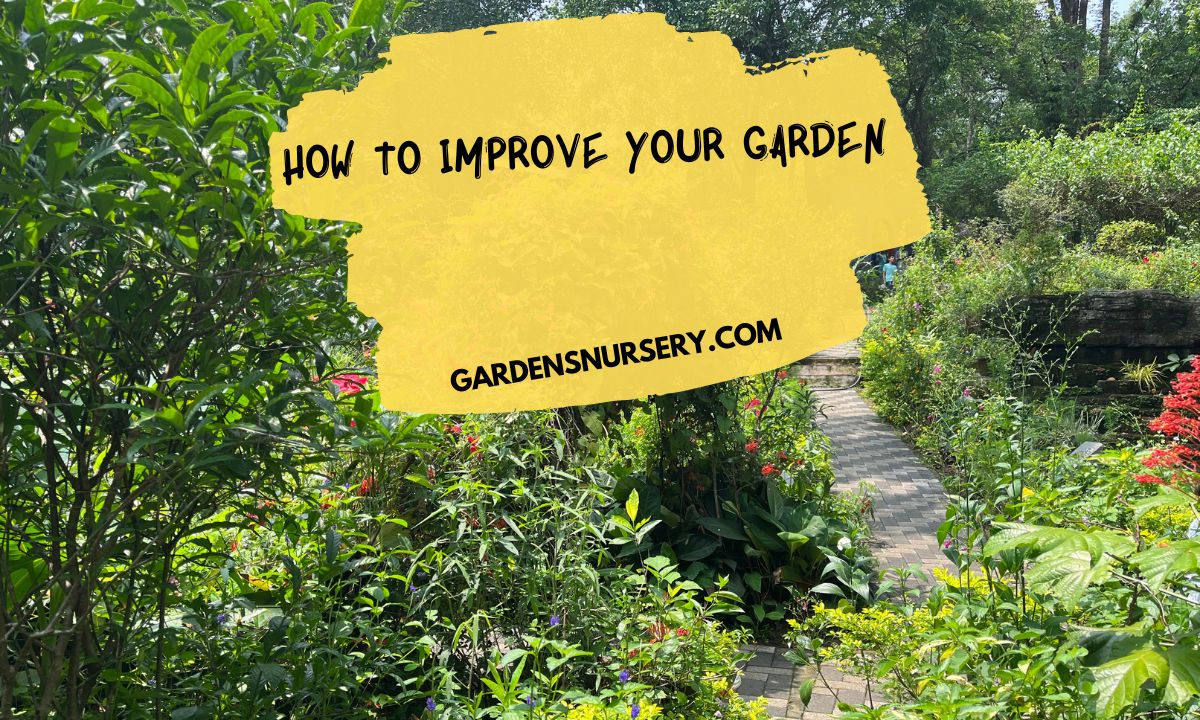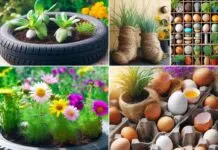How to Improve Your Garden
Are you tired of stepping into your garden and feeling underwhelmed? Do you dream of transforming your outdoor space into a tranquil sanctuary that reflects your style and personality? Look no further!
In this guide, we will explore various techniques and tips to help you improve your garden and create a serene oasis right outside your doorstep. From planning and design to plant selection and maintenance, we’ll cover it all. Let’s dive in! Here are the top tips on How to Improve Your Garden.
Gather Inspiration
Before starting any project, it’s important to have a clear vision of what you want to achieve. Sit down and think about how you want to use your garden space, what focal points you want to create, and what style you prefer. Look through magazines and garden catalogs for inspiration.
Check out gardens you admire online for layout and design ideas. Make notes, sketches and gather pictures of flowers, plants, and hardscaping elements you like. Having a good plan will help guide your next steps.
Embracing Sustainable Practices
Sustainable gardening practices not only benefit the environment but also promote a healthier garden. Use organic fertilizers and pest control methods to minimize chemical usage. Collect rainwater in barrels for irrigation and encourage beneficial insects and birds by providing habitats and food sources.
Assessing Your Garden’s Potential
Before embarking on your garden improvement journey, it’s important to assess your garden’s current state. Take a walk around and observe the existing features, such as trees, shrubs, and flower beds. Evaluate the soil quality, drainage, and sunlight exposure. This initial assessment will provide valuable insights into what aspects of your garden need improvement and what can be leveraged.
Define Garden Spaces
Once you know the overall look you’re going for, think about how to divide the garden into different areas for particular purposes. Common garden spaces include:
- Seating areas – with benches, chairs, and garden tables for eating, lounging, or entertaining
- Children’s play areas – with a swing set or sandpit
- Planting beds – for lush displays of flowers, herbs, and vegetables
- Outdoor kitchens – including a gas or charcoal grill and fridge
- Privacy screens – using hedges, awnings, or trellises
Dividing spaces and delineating pathways will help you get the most functional use from your garden.
Choosing the Right Plants
Selecting suitable plants for your garden is crucial for long-term success. Consider the local climate, sunlight availability, and soil conditions. Opt for native plants or those well-adapted to your region, as they require less maintenance and are more likely to thrive. Create a balanced mix of perennials, annuals, shrubs, and trees to provide year-round interest and attract beneficial wildlife.
Add Fresh Plantings
New plants are probably the easiest and most impactful way to upgrade your garden quickly. Choose plants that match the style you envision and will thrive in your climate. Consider:
- Perennials – like hostas, daylilies, and irises that come back year after year
- Ornamental grasses – add movement and texture
- Shrubs – offer structure and year-round greenery
- Blooming vines – to cover fences and walls
- Potted plants – for the instant impact that can be moved seasonally
Choose a variety of colors, heights, flower types, and bloom times for longevity of interest. Plan where you want to group similar plants together.
Improve Your Soil
The foundation of a healthy garden is the soil. Test your soil’s pH level and nutrient content to find out what amendments you need to boost fertility and growth Options include:
- Compost – adds organic matter and nutrients
- Lime – to raise acidic soil pH
- Sulfur – to lower alkaline soil pH
- Fertilizer – provides nitrogen, phosphorous, and potassium
Work any amendments into the top 6-12 inches of soil before adding new plants. This preparation will give them the best start.
Implementing Efficient Irrigation
Proper irrigation is essential to ensure your plants receive adequate water without wasting this precious resource. Consider installing a drip irrigation system that delivers water directly to the plant roots, reducing evaporation and runoff. Group plants with similar water need together to optimize irrigation efficiency further.
Embracing Sustainable Practices
Sustainable gardening practices not only benefit the environment but also promote a healthier garden. Use organic fertilizers and pest control methods to minimize chemical usage. Collect rainwater in barrels for irrigation and encourage beneficial insects and birds by providing habitats and food sources.
Inviting Wildlife
Transform your garden into a haven for wildlife by incorporating features that attract birds, butterflies, and other beneficial creatures. Plant native flowers that provide nectar and pollen, install bird feeders and nesting boxes and include a shallow water source for drinking and bathing.
Encouraging biodiversity in your garden not only adds beauty but also contributes to the ecosystem. By providing food, shelter, and water, you can create a thriving habitat for various wildlife species. Consider planting a variety of flowering plants that bloom at different times throughout the year, ensuring a continuous supply of nectar for pollinators. Additionally, create sheltered areas with dense vegetation or add birdhouses and bat boxes to attract feathered friends and natural pest controllers.
Add Decorative Elements
Garden structures and hardscaping elements can take your garden to the next level. Consider adding:
- Pathways and patios made of concrete, stones, or pavers for accessibility and entertainment areas
- Outdoor lightings like solar path lights, lanterns, and post lights for safety and ambiance
- Garden art like statues, pots, fountains, and birdbaths for visual interest
- Garden benches and seating areas for gathering and lounging
- Trellises and arbors to frame focal points and support climbing plants
- Water features like ponds and fountains add soothing sounds and reflectivity
Choose elements that complement your garden style and balance hardscape with plantings for an aesthetically pleasing design, Prune, Weed, and Maintain Regularly Once you’ve improved your garden, it’s important to keep up with routine tasks to maintain that “just improved” look This includes:
- Pruning shrubs, vines, and perennials to maintain their shape and encourage new growth
- Weeding flower beds, pathways, and cracks
- Watering during dry spells, especially when establishing new plants
- Mulching around plants to conserve moisture, suppress weeds and prevent soil erosion
- Removing dead or diseased plant material to keep the garden healthy
By caring for your garden on a regular basis, your improvements will enjoy a long lifespan.
Conclusion
In conclusion, improving your garden does not need to be a major overhaul. Simple steps like adding new plants, enhancing soil fertility, and incorporating decorative elements can go a long way in achieving the garden of your dreams.
The most important thing is to tend to your garden regularly through proper pruning, weeding, and providing basic care to maintain its beauty for years to come. With a little patience and persistence, you can transform your current garden into an outdoor oasis you love.










